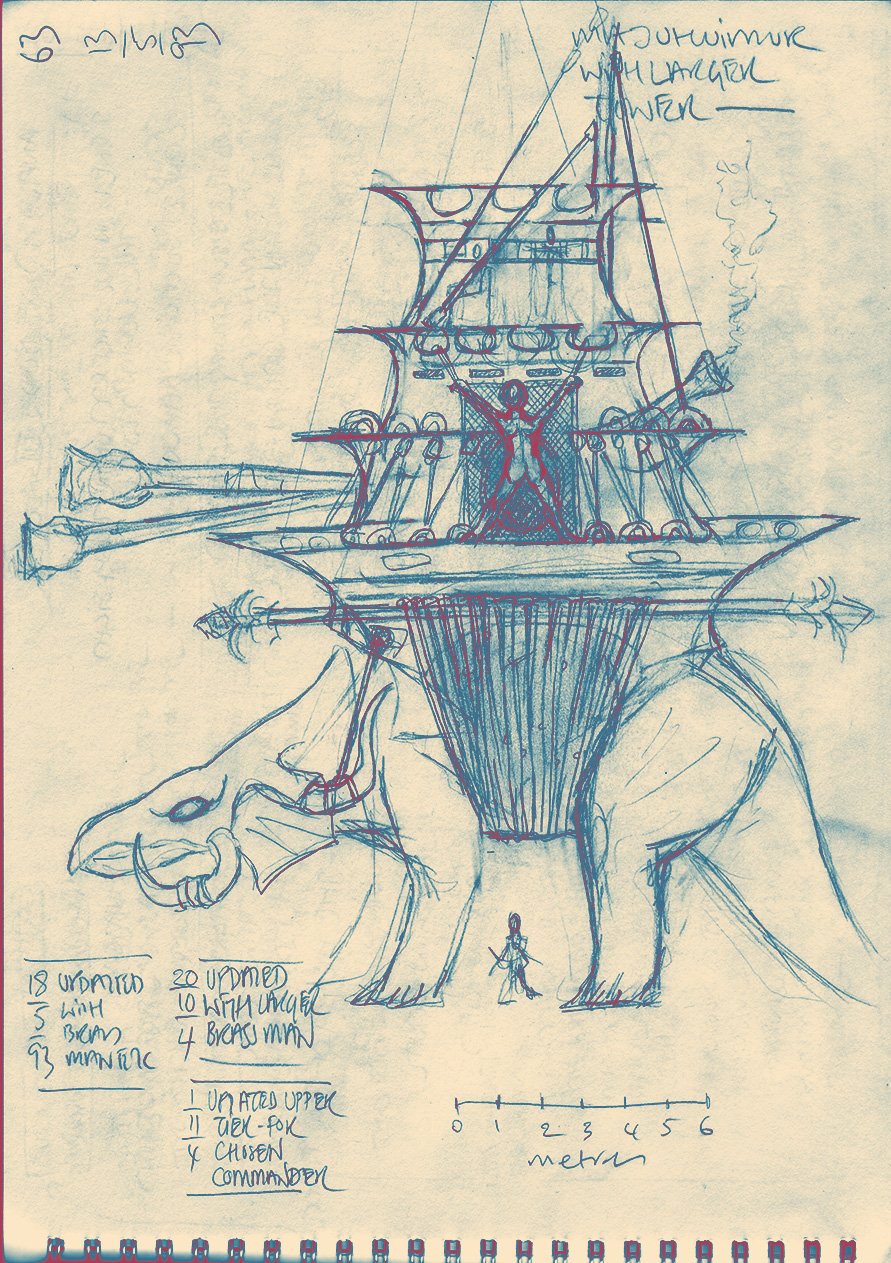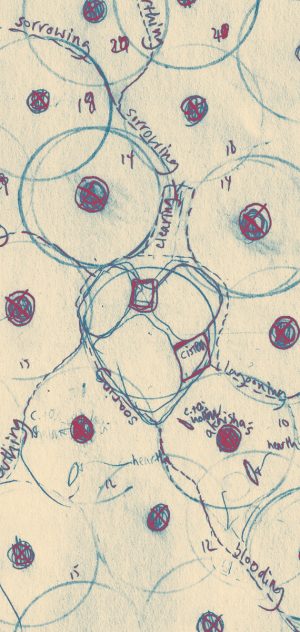Chapter: Raveners
Information relevant to the 5th chapter of Dragon Fire
the neighbourhood of the Koppie and Aurum’s camp

This is a map showing the area around the Koppie of the Ochre—the circle at the centre of the drawing. Note the relationship between the Koppie and the Backbone that runs up the left hand side. The irregular shapes show the positions of the various seasonal lagoons. Also shown are the positions of neighbouring koppies of other Plainsman tribes
the Koppie
The first sketch shows, roughly, what you would see if you were standing on the edge of the Outditch. The inner ferngardens lead to the Homeditch, that is like a moat for the hill that rises to the Crag. It is upon this hill, the Grove, that the mother trees grow—cedars that are sacred to the Plainsmen. Only a few of these trees are shown—there should be enough to cover the whole hill. The other line of trees are the magnolias lining the Lagooning
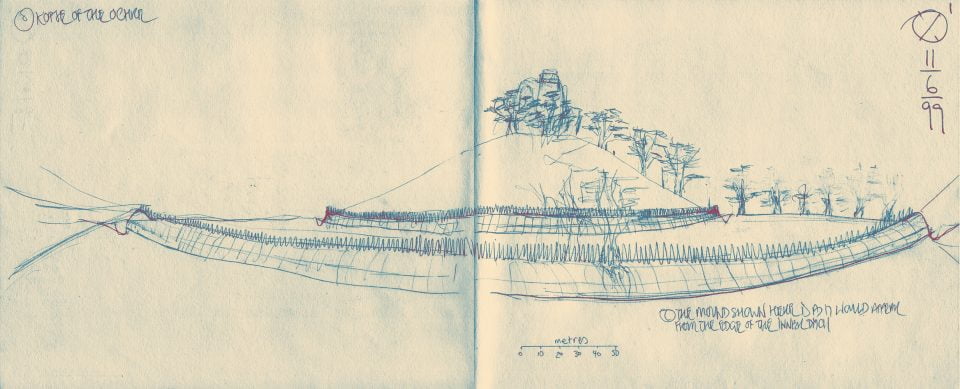

The second diagram shows the original map of the Koppie that I refined throughout the writing of The Standing Dead. Neil Gower worked from this to produce his version for publication.
In the bottom left you will see the faint remnants of the bloodwood tree and the killing field, showing their original position. This was changed once I better understood that the direction of the prevailing wind was an easterly. The location of the field in which the Ochre slaughter earthers has been chosen so that the scent of blood travels as far as it can before reaching the open fernland where it might attract the unwanted attention of raveners
the Grove
The Grove is the collection of cedars, or mother trees, covering the slopes of the hill that rises at the centre of the Koppie. All the koppies of the Plainsmen are built around such a hill, and the grove of the Ochre is typical
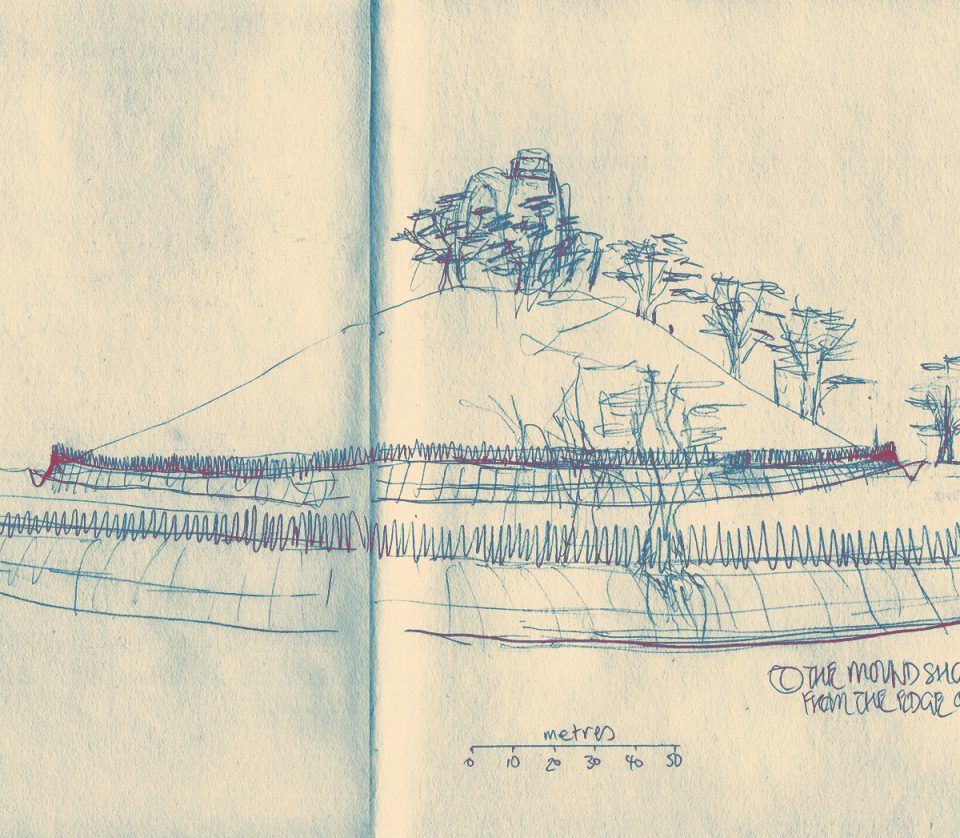
The first diagram is a rough sketch showing this mound, surrounded by the Homeditch (only a few of the cedars are shown). At the very summit of the hill, at the heart of the Grove, is the Crag—rocks that rise above the cedars among which is built the Ancestor House of the Ochre, and upon the summit of which they expose their dead

The second diagram shows the original map of the Grove that I used throughout the writing of The Standing Dead. (To read the labels, it might be easier to refer to Neil Gower’s version.) The small dark circles indicate the trunks of individual cedars. Those with crosses are trees belonging to a ‘hearth’. The larger circles give an indication of how far the branches of each tree extend and thus the extent of each hearth’s ‘rootearth’ or territory.
Note how more densely packed are the cedars around the Homeditch—this is so that their roots will reinforce the walls of the ditch. Also of note are the various ‘rootstairs’ that wind down the slopes, along the edges of the various rootearths, to the gates and earthbridges that cross the Homeditch to the ferngardens
At the centre of the Grove are located the three immense boulders that together form the Crag. The square nestling between two of them, to the north, is the Ancestor House. The other square to the east is the cistern. Touching this, to the south-east, is the rootearth of Akaisha’s hearth
The third diagram is a detail from the Grove map. I have included this so that it is easier to see the Crag and Akaisha’s mother tree in particular. Both the actual hearth and the hollow where Carnelian and Osidian sleep are marked
Note also the clearing that the Ancestor House looks down into
Mother Trees
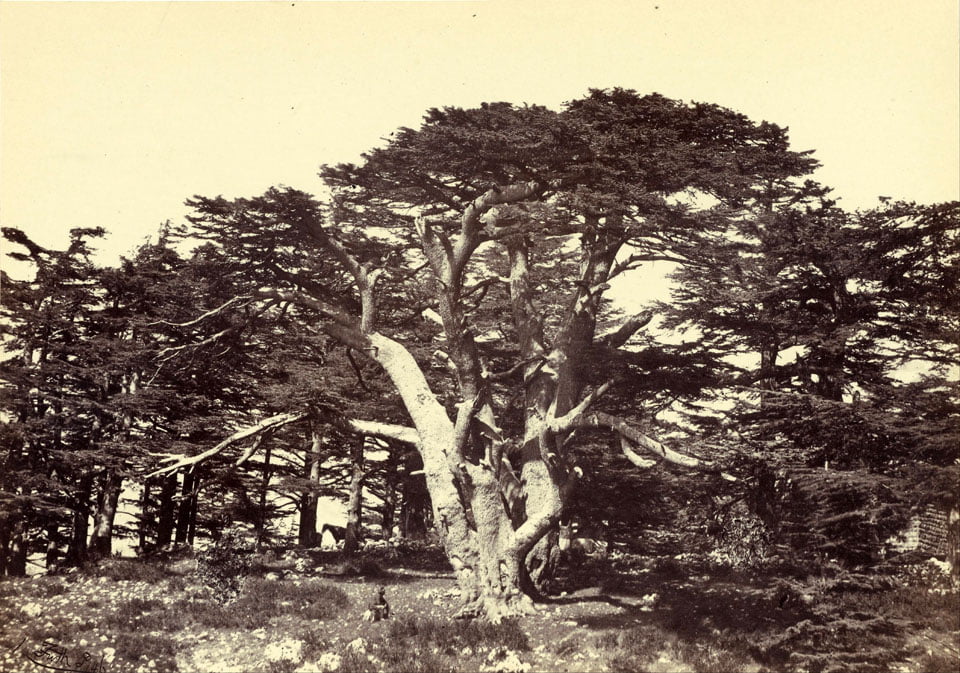

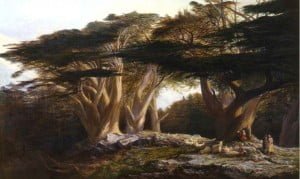

Mother Trees are a species of cedar. I took the second photograph, one summer, of a beautiful example located in the Edinburgh Royal Botanic Gardens. I spent much time lying under it, looking up through its branches at the sky. Tragically, it was damaged in a storm and had to be cut down. The specimen shown is a small one. On the slopes of Lebanon, famed since ancient time for these trees, some exist that are hundreds of years old and that reach a height of 18m (54ft), an expanse of 32m (100ft), and whose trunks are 4m (12ft) in diameter
Battle of the Raveners

The sketch above shows the different phases of the Battle of the Raveners. North is roughly towards the top. The circular structure is the Twostone koppie. The first phase (top left) shows Carnelian’s forces moving east. Aurum’s forces are located to the north and south of the koppie. The following phases (middle top > top right > middle right) show the way Aurum’s forces follow Carnelian’s east. The battle proper occurs after the last phase shown.

